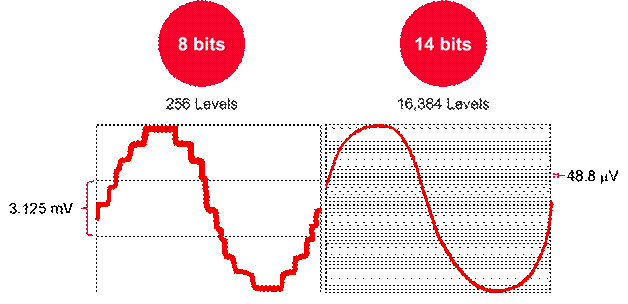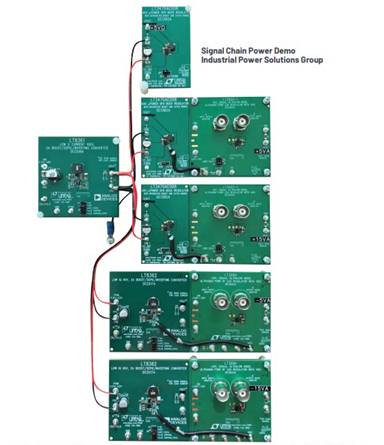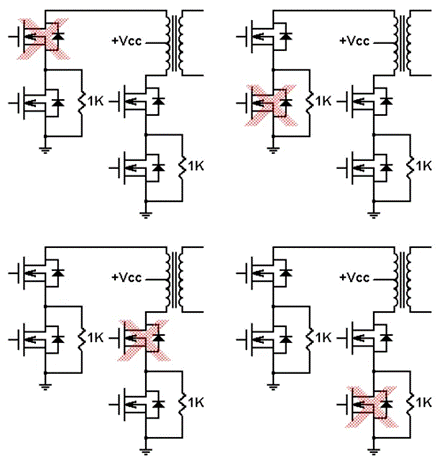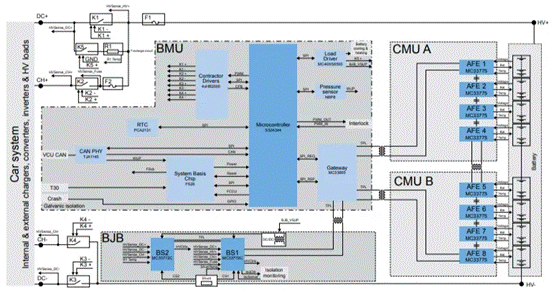价格低,易运用规划完成外围传感器|0″>传感器 的监控。
的监控。
传统操控体系规划运用阻隔开关操控电源和各种体系功用,可是给小型微处理器体系添加一些器材,能与体系开关结组成操控功用。例如,规划体系显现相对湿度和温度(参考文献1)。这个小型电池供电的体系需求微处理器可控的供能开关,可以用按钮完成。摄氏度显现到热力学温度的改动也可以用一个功用开关完成。从易运用和总投入的观念看,用单一开关结合这两个功用更有意义。
图1显现这个运用的电路。首要,R1使P沟道MOSFET Q1的栅-源极电压稳定在0V,使得Q1封闭。没有输入到达电压稳压器IC1,然后体系的微处理器IC2还依然封闭。当操作者按下常闭瞬时触摸按钮开关S1,电流经过R1和R2流到地,不断提高栅源极电压到满足翻开Q1和为IC1和微处理器供能。%&&&&&%C1使开关触摸处弹起,不管运用者多敏捷的按下和开释开关,都保证Q1状况满足长到使微处理器发动。此外,作为最终的使命,发动固件初始化体系的LCD,然后使操作者趋势坚持供能开关处于方位上时刻满足长,保证彻底发动。
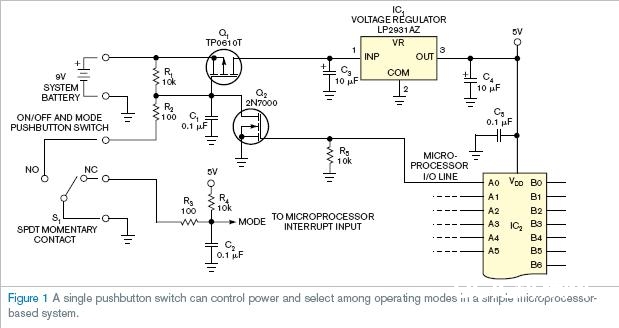
微处理器当即发动之后,开端履行固件并经过3V以上的N沟道MOSFET Q2门极电压传递到逻辑单元,翻开Q2。接下来,Q2坚持Q1开关翻开,体系在软件操控下运转。假如操作者再次按下开关按钮,Q1依然翻开,微处理器持续运转,可是模型线被上拉。模型线驱动中止输入引脚,软件作为所存功用或拜访包裹的多选择菜单来运用中止。恰当的预编程时刻距离后,微处理器体系经过Q2的栅极被置于逻辑零而完成自我封闭。然后,Q2封闭Q1完成体系断电。
英文原文:
Single switch serves dual duty in small, microprocessor-based system
Low-cost, easy-to-use design allows monitoring of peripherals, sensors.
Steve Hageman, Windsor, CA; Edited by Brad Thompson and Fran Granville — EDN, 3/30/2006
Traditional control-system designs use separate switches to control power and various system functions, but adding a few components to a small, microprocessor-based system can combine a control function with the system’s on/off switch. For example, you can design a system to display relative humidity and temperature (Reference 1). This small, battery-powered system requires a microprocessor-controlled on/off power switch, which you implement with a pushbutton, and a function switch to change the display from degrees Celsius to degrees Fahrenheit, which you implement as a toggle switch. From ease-of-use and total- cost perspectives, combining these two functions in a single switch makes sense.
Figure 1 shows a circuit for this application. Initially, Q1, a P-channel MOSFET, is off because R1 holds Q1’s gate-to-source voltage at 0V. No input reaches voltage regulator IC1, and, thus, the system’s microprocessor, IC2, also remains off. When the operator presses the normally closed momentary-contact pushbutton switch, S1, current flows through R1 and R2 to gro
und, developing sufficient gate-to-source voltage to turn on Q1 and apply power to voltage regulator %&&&&&%1 and the microprocessor. Capacitor C1 debounces the switch contact and ensures that Q1 remains on long enough to start the microprocessor, regardless of how quickly the user presses and releases the switch. In addition, as its final task, the start-up firmware initializes the system’s LCD, thus reinforcing the operator’s tendency to hold the power switch in its on position long enough to ensu
re full start-up.
Immediately after the microprocessor powers up, it begins executing its firmware and turns on Q2, an N-channel MOSFET, by delivering a logic one of more than 3V to Q2’s gate. In turn, Q2 keeps Q1 switched on, and the system runs under software control. If the operator again presses the on/off button, Q1 remains on, and the microprocessor continues to run but pulls its mode line high. The mode line drives an interrupt input pin, and the software can use the interrupt as a toggling function or to access a wraparound, multiple-choice menu. After a suitable preprogrammed time interval, the microprocessor system turns itself off by placing a logic zero on Q2’s gate. In turn, Q2 switches off Q1 to remove power from the system.
Reference
Hageman, Steve, Relative humidity/temperature meter, www.analoghome.com/projects/dewpointer.html.
英文原文地址:http://www.edn.com/article/CA6317068.html



